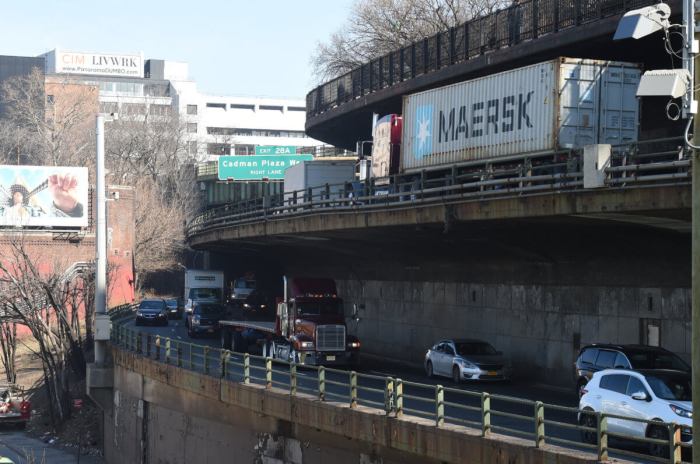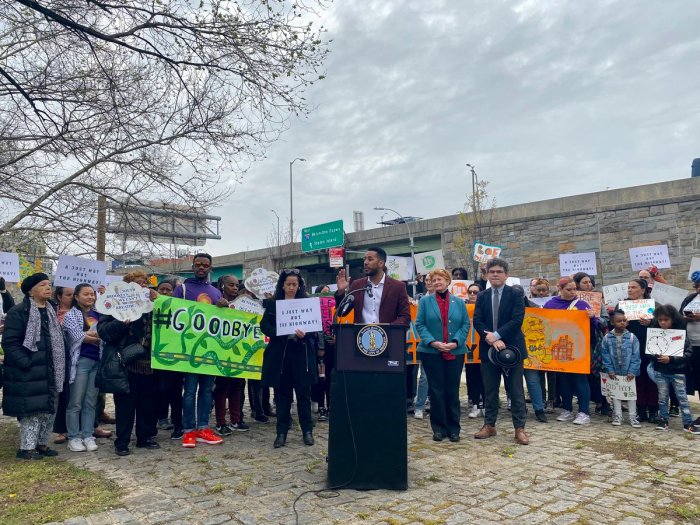The worst is yet to come!
Locals dreading delays when the L train’s Brooklyn–Manhattan tunnel shutters for 15 months next April can expect an even more-hellish commute when the city kicks off its repairs to the Brooklyn–Queens Expressway’s crumbling triple cantilever, according to Mayor DeBlasio.
“The L train shutdown is taking a piece of mass transit offline for a very-limited piece of its run,” Hizzoner said. “The BQE is taking a crucial highway out of the equation that also is a truck route. That is a more-complex reality.”
Work to rehabilitate the three-tiered 1.5-mile stretch of expressway from Atlantic Avenue to Sands Street can now start as early as 2021 — months after full L-train service is supposed to resume — and wrap by 2026, after state lawmakers in April passed a budget authorizing use of the streamlined design-build process for the city-led job, which will allow the Department of Transportation to solicit one bid for both the design and construction phases of the project, instead of contracting separate firms for each.
Green-lighting design-build, which proponents say will also shave about $100 million from the repair’s total $1.9-billion price tag, means the repairs will likely finish before 2028 — the year local transit leaders warned they might have to force the roughly 16,000 trucks that travel the expressway daily down local streets instead so the triple cantilever doesn’t collapse beneath their weight.
And residents shouldn’t worry about the decrepit, nearly 70-year-old roadway crumbling before then — even if they’ve read reports of other bridges around the world spontaneously collapsing — because the city’s top priority is making sure its infrastructure is safe, the mayor said.
“I think the city over the decades has a very-good record of staying on top of our highways and our bridges in terms of their structural reality,” he said. “A lot of work has been done to keep it going on the way to a much bigger solution.”
Even with the sped-up process, however, rebuilding part of a major roadway that connects Brooklyn with the outer boroughs will not be without its headaches, and locals should prepare for them, according to DeBlasio, who implored the reporters in the room not to blow up the situation in the way he said they catastrophized other necessary infrastructure projects, such as dubbing the L-train closure the “L-pocalypse.”
“There’s going to be disruption anytime you have to do something big,” he said. “I know you need your clicks guys, but I just think it creates this atmosphere of alarm, and then people deal with it.”
But unlike said L-pocalypse — for which, city and state transportation officials are rolling out a plan to aid the roughly 225,000 L-train riders who cross the East River daily that includes more service on other trains, more ferries, new bike paths, and other options — there’s no backup highway for drivers to use when sections of the expressway are closed for its repair, DeBlasio said.
“We can do a lot with buses, ferries, and bikes to compensate for only 15 months,” he said. “When it comes time to fix the BQE, we don’t have perfect alternatives, and we will have to start the process of announcing what the plans look like soon.”























